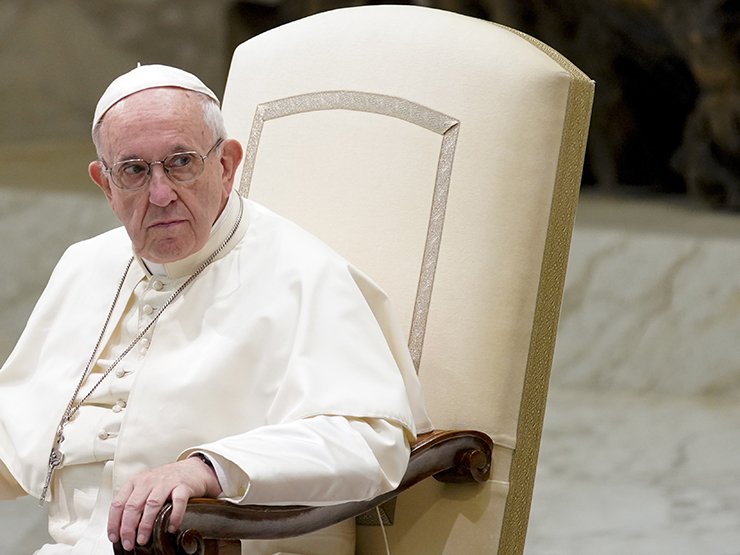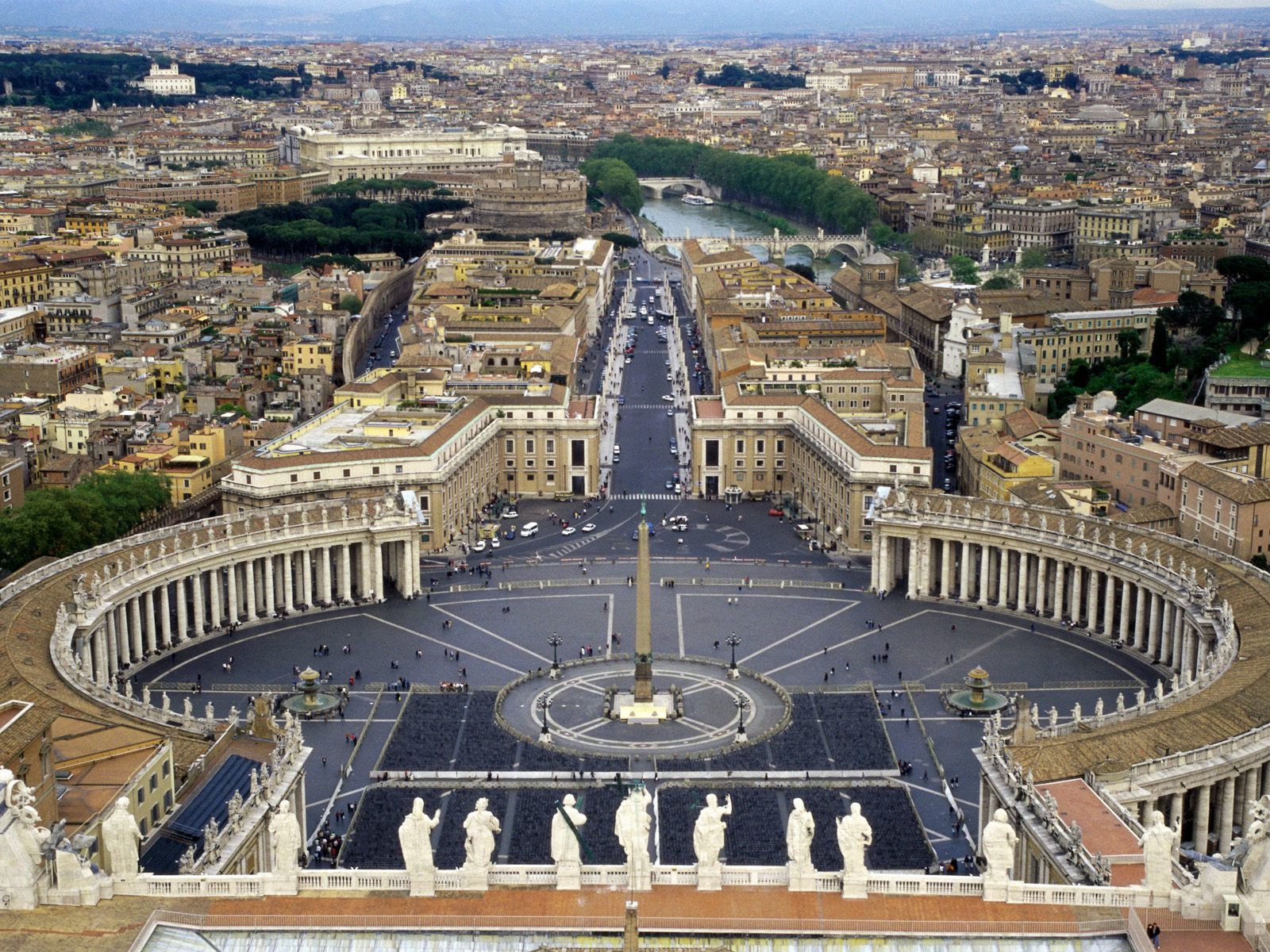
Views: 1855
he Roman Catholic Church and the Peoples Republic of China are set to sign an agreement, which would formally end the hostilities between these two entities. The Chinese government will formally acknowledge the Pope as the leader of the Catholic Church in China. In exchange, the Pope will reinstate ex-communicated Bishops selected by the Communist Party to lead Catholics on the Chinese mainland. In this context, it is worth reviewing the shifts and evolutions of Catholicism in global politics.
Opposing Capitalism and Marxism
Surprising as it may be to many Republicans in the United States, the Roman Catholic Church officially opposes capitalism. In fact, clerical anti-capitalism predates Marxism by centuries. As the merchant class was emerging in Europe, Catholic theology tended to uphold the “natural order” represented in the feudal hierarchy. The church saw the marketplace as a sinful mess of greed and anarchy. Gutenberg’s printing press, which led to the translation and widespread publication of the Bible, and eventually the Protestant Reformation, is seen as the opening shot act in the struggle resulting in the eventual rise of liberal democratic nation-states and the market. Papal proclamations that shifted regulations on money-lending laid the foundations for modern finance. For example, the roots of the titanic institution known as Bank of America can be traced back to early Italian bankers, who emerged as the church loosened its restrictions on Usury.
While Catholic anti-capitalism, which emphasizes morality and obedience over “economic freedom,” has been longstanding, the ideology of Marxism is something Rome has always opposed. Catholicism views Marxism as godlessly fomenting revolts against legitimate “God given” authority. Furthermore, Marxist economic determinism is perceived as undermining the moral responsibility of individuals for their actions.
As Marxism proliferated throughout Europe, most especially after the Russian Revolution, it was not uncommon for Roman Catholic Anti-Communists to invoke a supposed “Jewish origin” of Marxism while condemning it. Many Catholics also espoused the belief that Marxism was linked to the Bavarian illuminati, which the Church had suppressed in the 1780s. Rome never formally endorsed any conspiracy theory about the origins of Marxism, but among politicized Catholics, such beliefs were certainly widespread.
In the 1920s and 30s as the political current known as Fascism emerged, the Roman Catholic community was a primary recruiting ground. The Vatican’s status as an independent state was arranged by the originator of the word “fascism” himself, Benito Mussolini. Prior to the Second World War, the Soviet Union was condemned by the Catholic Church as an atheistic autocracy, and the duty of all Roman Catholics was to work against the global communist movement. Catholics were rallied to support General Francisco Franco in his Civil War against the Spanish Republic.
“Kill A Commie for Christ”
In the United States, rural and southern communities were the primary base of rightwing politics, and bigotry against Catholics was prevalent among conservatives. The Ku Klux Klan hated Roman Catholics, going as far as to stage a national rally in opposition to “Columbus Day.” Prohibition on alcohol was passed as conservative protestants perceived the Catholic tolerance for social drinking as a threat to American values. Hostility from conservatives resulted in most Catholics, many of whom were recent immigrants living in urban centers, occupying the liberal end of the political spectrum. Anti-Catholic sentiments against Democrat Al Smith were key in securing the victory Herbert Hoover’s in the 1928 Presidential election.
However, a Catholic oriented brand of far-right politics in the United States eventually emerged in the 1930s. Father Charles Coughlin of Michigan, the infamous “Radio Priest” known for his Pro-Hitler and Anti-Semitic Sermons became a national political figure. Unlike the Ku Klux Klan and other far-rightists of the time, Coughlin’s fascist rhetoric spoke against “international bankers” and condemned capitalism, while at the same time opposing the labor movement and the Roosevelt administration as an example of “Godless Communism.” When the Second World War broke out in 1939, the Vatican ordered Coughlin to cease his radio broadcasts.
As the Cold War began, the Soviet Union considered the Roman Catholic Church to be one of its primary enemies and vice-versa. Communist publications frequently referred to the Catholic Church as “fascist” and accused it of complicity in the Holocaust. Urban Catholic Democrats such as the Kennedy family were supporters of the House Un-American Activities Committee as McCarthyism set in. The Catholic Trade Union associations worked to ban Communists from working in Auto-plants and Steel mills. Catholic high school students, bearing placards that said “Kill a Commie for Christ” were mobilized to violently attack the May 1st parade in New York City in 1948.
As the USA and Europe marched in lockstep against the Soviet Union during the 1950s, the Catholic Church was in an anti-communist frenzy. Across post-war Europe, Church attendance significantly declined, but those who remained practicing Catholics were not only opposed to Communists, but also to Social-Democracy. The Vatican’s flock generally embraced “Christian Democratic” political parties, perceiving even the anti-Soviet Social-Democratic parties as being tainted by Marxist materialism.
Vietnam, Central America & Nuclear Weapons
The geopolitics of Catholicism began to shift in the 1960s. The Second Vatican Pastoral Council convened in October of 1962. The event is seen as pivotal in the modern history of the Catholic Church. The council published a document proclaiming “any act of war aimed indiscriminately at the destruction of entire cities… is a crime against God and man himself. It merits unequivocal and unhesitating condemnation.” This was widely interpreted as a condemnation of the bombing campaigns conducted by the US military during the Second World War and the Korean War.
A minority of Catholic clergy in the United States protested the Vietnam War from the beginning. Father Daniel Berrigan, a Catholic Priest, was even briefly placed on the FBI’s most wanted list for his role in destroying draft records as an act of protest. By the early 1970s, it seemed that the Church was no longer espousing the fanatical anti-Sovietism that had previously defined it and many Catholics were vocally opposing the Vietnam War. As Evangelical Christians emerged as a significant axis within US politics following the upheavals of the Vietnam-era, the Catholic Church did not echo their hysterical fears of the Soviet Union.
In the 1980s, divisions between the Vatican and Washington seemed the most stark in Central America. The Sandinista government that took power in 1979 in Nicaragua embraced the Catholic Church, and priests openly held governmental offices. “Liberation Theology” that put forward a socialist interpretation of the Bible became very popular in Central and South America, and many Catholic clergy openly declared support for it.
As Guatemala, El Salvador, and other countries were swept up in Civil War, the United States aligned itself with armed anti-communist fanatics dubbed “Contras.” The Contras and the right-wing of Latin America embraced evangelical protestant teachings from the United States, and saw free market capitalism as biblically mandated. Reverend Jerry Falwell, a key political figure in the United States who formed the “Moral Majority,” spent a large amount of time south of the US border, rallying Spanish speaking crowds against Marxism. As Civil Wars raged across Central and South America in the 1980s, Catholic clergy were slaughtered in a number of different massacres and assassinations.
The Left Turn of Pope Francis
In 2016, Pope Francis made headlines around the world when he began emphasizing opposition to capitalism. Pope Francis was clear that he did not support Marxism, or any Marxist interpretation of Liberation Theology, but he continued to emphasize opposition to income inequality with rhetoric similar to US Presidential Candidate Bernie Sanders. Pope Francis has maintained the Catholic opposition to abortion and gay marriage, but has gone as far as meeting with groups of gay activists and repeatedly declaring that homosexuals are welcome in the Church.
This apparent left turn from Pope Francis paralleled a similar shift among anti-Communists in Latin America. While those who opposed the governments of Hugo Chavez, Nicolas Maduro, Evo Morales, and other Marxists in Latin America had generally defended capitalism and free markets, the right wing of South and Central America shifted its rhetoric at approximately the same time. Henrique Caprilles of Venezuela and other anti-Communists began saying they were also advocates of “socialism” but favored friendly relations with the United States, and opposed the “extremism” of the Bolivarian governments. While Pope Francis puts forward criticism of capitalism, he has loudly condemned the government of Venezuela.
Pope Francis has also made harsh criticisms of the “new right” in Europe and Trump administration in the United States. The Vatican officially condemned the US policy of separating of immigrant families and calls for refugees to be welcomed in Europe.
The new friendliness between the Vatican and Beijing, and Pope Francis’ criticism of Trump, fits in with increasing division between the USA and Western Europe. The Obama administration seemed to work hard for unity within NATO. The Trump administration seems to be far less accommodating to the western European countries. As Trump puts tariffs on China, countries throughout western Europe seem to be embracing the Belt and Road Initiative and having increasingly friendly ties to Beijing. Following a pattern of contemporary Catholicism, the Vatican seems to follow Western Europe in embracing or opposing US foreign policy.
The NATO countries in Europe seem to focus on opposing Russia, while continuing to do business with China. This seems to be the opposite of Trump’s policy of escalating a trade war with China while deflecting accusations that he “colluded” with Russia in the 2016 elections. As distance between the United States and Europe expands, it can be expected that the Vatican will be more critical of US foreign policy. However, as Britain exits the European Union, and Germany and other EU countries assert their right to import Russian natural gas, new shifts are certainly possible.
It is worth noting that while the Vatican appears to be on the verge of pivotal agreement with the Chinese Communist-led government, the Church in Vietnam continues to be viewed as a source of opposition. As Vietnam continues to be critical of China, it has been positioning itself closer to the United States, even hosting US naval vessels. Meanwhile, the Vatican continues to condemn Vietnam and accuse the Communist Party of repressing the Catholic minority, which represents only 7% of the population.
What is clear is that the geopolitical positions of the Vatican are not stagnant, and tend to evolve and shift based on circumstances. At the same time, the role of the Catholic Church in societies around the world seems to also be shifting, creating room for even more dramatic adjustments and surprises. Yet, sexual abuse scandals continue to plague the Vatican, regardless of its geopolitical turns.
Originally published on 2018-09-18
About the author: Caleb Maupin is a political analyst and activist based in New York. He studied political science at Baldwin-Wallace College and was inspired and involved in the Occupy Wall Street movement, especially for the online magazine “New Eastern Outlook”.
Source: New Eastern Outlook
Origins of images: Facebook, Twitter, Wikimedia, Wikipedia, Flickr, Google, Imageinjection & Pinterest.
Read our Disclaimer/Legal Statement!
Donate to Support Us
We would like to ask you to consider a small donation to help our team keep working. We accept no advertising and rely only on you, our readers, to keep us digging the truth on history, global politics and international relations.











